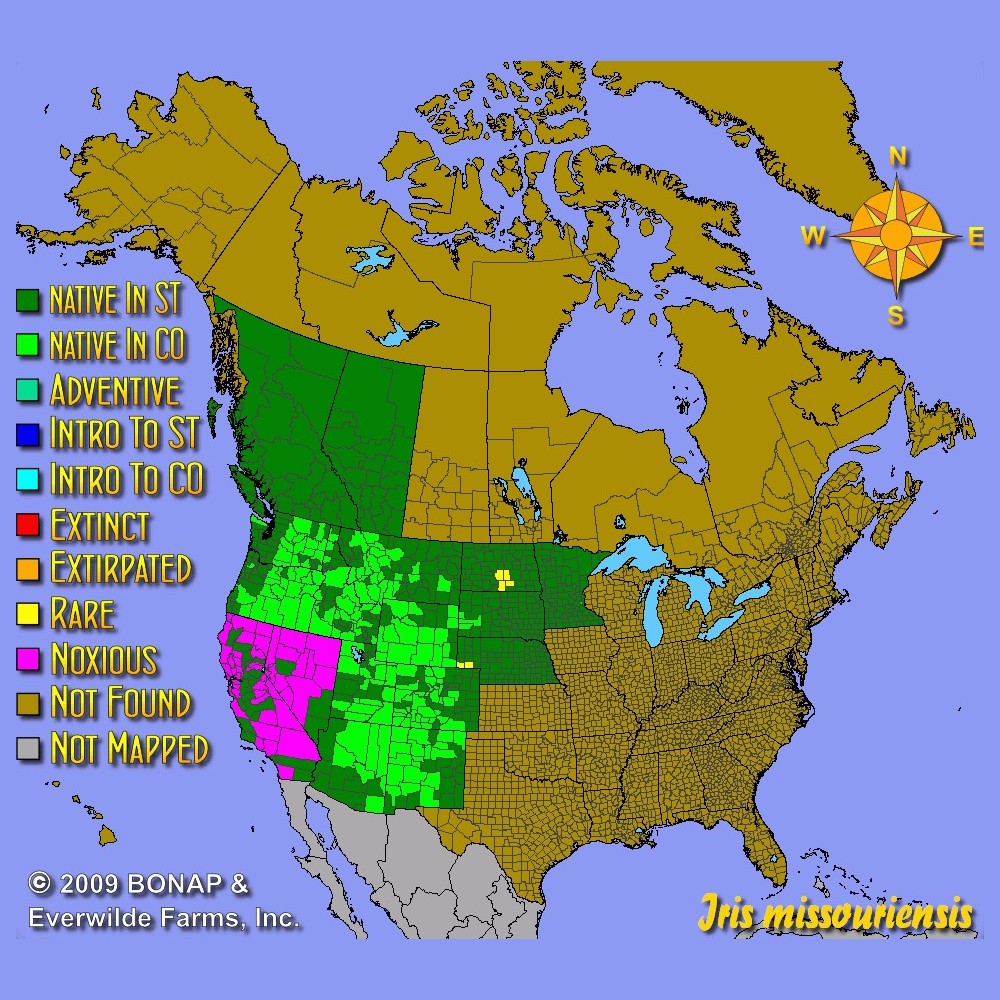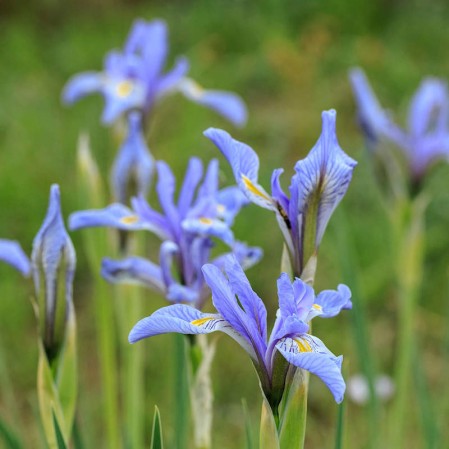Wild Blue Iris Seeds
Iris missouriensis
- HOW TO GROW
- FAST FACTS
HOW TO GROW
Sowing: To help soften the hard seed coat, soak the wild blue iris seeds overnight in warm water before planting. To germinate, these seeds need a period of several months of cold followed by warmth. To accomplish this naturally, direct sow the Iris Missouriensis seeds in fall; they will begin to germinate in the late spring and early summer. Alternatively, the seed can be store in moist sand in the refrigerator for 60-90 days then planted 1/2" deep in peat pots. For best results, use slightly acidic soil and keep the soil moist but not wet until germination. These wild blue iris seeds germinate rather slowly, often taking several months to sprout. Keep in mind that germination will continue through the first several years, as the seeds gradually come out of dormancy. The seedlings can be planted outdoors in late spring or early summer or when there is no chance of frost, or when they have reached a height of 4-6".
Growing: Seedlings will need frequent watering until they become established, though mature plants are rather drought tolerant and do not require moist soil. These native plants flourish with little attention, and eventually form natural colonies that last for decades. When fully grown, the plants can easily be divided in late fall. Blooming usually begins in the second year after planting.
Harvesting: These blossoms do not perform well as cut flowers, and are best enjoyed outdoors.
Seed Saving: Very soon after blooming, this plant will produce large green pods that quickly turn brown and drop their seed. Gather the pods as soon as the Iris Missouriensis seeds inside have turned brown; spread the pods out to dry completely, then separate the seeds from the husks. Store the cleaned seed in a cool, dry place.
FAST FACTS
Common Names: Rocky Mountain Iris, Wild Blue Iris
Latin Name: Iris missouriensis
Species Origin: US Native Wildflower
Type: Native Wildflowers
Life Cycle: Perennial
USDA Zones: 3, 4, 5, 6, 7, 8, 9, 10, 11
US Regions: California, Mountain, Arid/Desert, Plains/Texas
Seeds per Ounce: 1,650
Stratification: Cold/Wet for 8 Weeks
Germination Ease: Stratify 8 Weeks
Sunlight: Full Sun
Height: 18 Inches
Color: Blue
Bloom Season: Blooms Early Summer, Blooms Late Summer
Uses: Cut Flowers, Deer Resistant
DESCRIPTION

HOW TO GROW
Sowing: To help soften the hard seed coat, soak the wild blue iris seeds overnight in warm water before planting. To germinate, these seeds need a period of several months of cold followed by warmth. To accomplish this naturally, direct sow the Iris Missouriensis seeds in fall; they will begin to germinate in the late spring and early summer. Alternatively, the seed can be store in moist sand in the refrigerator for 60-90 days then planted 1/2" deep in peat pots. For best results, use slightly acidic soil and keep the soil moist but not wet until germination. These wild blue iris seeds germinate rather slowly, often taking several months to sprout. Keep in mind that germination will continue through the first several years, as the seeds gradually come out of dormancy. The seedlings can be planted outdoors in late spring or early summer or when there is no chance of frost, or when they have reached a height of 4-6".
Growing: Seedlings will need frequent watering until they become established, though mature plants are rather drought tolerant and do not require moist soil. These native plants flourish with little attention, and eventually form natural colonies that last for decades. When fully grown, the plants can easily be divided in late fall. Blooming usually begins in the second year after planting.
Harvesting: These blossoms do not perform well as cut flowers, and are best enjoyed outdoors.
Seed Saving: Very soon after blooming, this plant will produce large green pods that quickly turn brown and drop their seed. Gather the pods as soon as the Iris Missouriensis seeds inside have turned brown; spread the pods out to dry completely, then separate the seeds from the husks. Store the cleaned seed in a cool, dry place.
FAST FACTS
Common Names: Rocky Mountain Iris, Wild Blue Iris
Latin Name: Iris missouriensis
Species Origin: US Native Wildflower
Type: Native Wildflowers
Life Cycle: Perennial
USDA Zones: 3, 4, 5, 6, 7, 8, 9, 10, 11
US Regions: California, Mountain, Arid/Desert, Plains/Texas
Seeds per Ounce: 1,650
Stratification: Cold/Wet for 8 Weeks
Germination Ease: Stratify 8 Weeks
Sunlight: Full Sun
Height: 18 Inches
Color: Blue
Bloom Season: Blooms Early Summer, Blooms Late Summer
Uses: Cut Flowers, Deer Resistant





